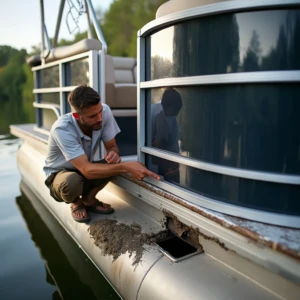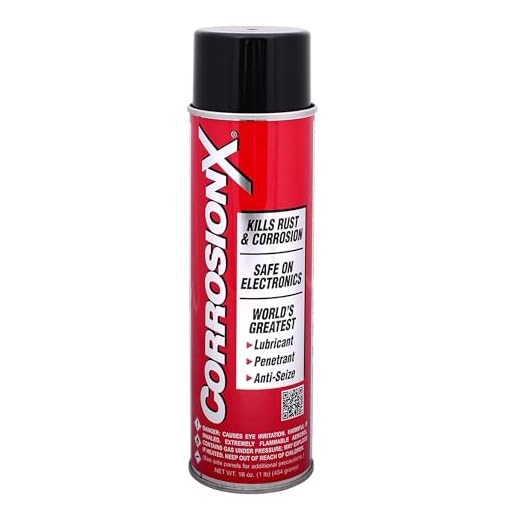Basics of Pontoon Boat Repairs
Are you a pontoon boat owner looking to repair a hole in your boat? You’ve come to the right place. Before we get into the step-by-step guide for repairing a hole in your pontoon, let’s first understand the basics of pontoon boat repairs.
Pontoon Boats and Their Structure
Pontoon boats are recreational watercraft that have two or three pontoons mounted on the bottom of the boat. The pontoons are typically cylindrical in shape and provide buoyancy to the boat. They come in a variety of sizes and shapes, ranging from small fishing pontoons to large party barges. Understanding the structure of a pontoon boat is crucial when it comes to repairing any damage.
Common Reasons for Hull Damage
There are several common reasons why a pontoon boat’s hull may suffer damage. These include collisions, grounding, and normal wear and tear. It’s essential to identify the cause of the damage to repair it correctly and prevent any further damage in the future.
When to Repair vs. When to Replace Parts of Your Pontoon
While repairs can fix most pontoon damage, it’s essential to know when to replace parts entirely. In cases of severe damage or corrosion, replacing the parts may be more cost-effective and efficient than repairs.
Tools and Materials Needed for Repairing Holes
Before beginning any repairs, it’s crucial to gather the necessary tools and materials. The tools and materials required for the repair process depend on the size and location of the damage and the type of pontoon material.
Assessing the Damage on Your Pontoon Boat
Before repairing a hole on your pontoon boat, you need to assess the type of damage that has occurred. If the damage is substantial, then repairing may not be an option. Hence it is crucial to understand the extent of the damage before attempting to repair.
Evaluating the Size and Location of the Hole
To assess the size of the damage, you need to measure the length, width, and depth of the hole. It is crucial to ensure that you have accurate measurements before starting the repair process. This will ensure that the repair is done accurately, and no further damage occurs.
The location of the hole is essential in determining if it can be repaired or not. If it is located at the bottom or side of the pontoon boat where it will be continuously in contact with water, you must evaluate if the repair option will be a safe and effective one.
Determining the Type of Material Your Pontoon Is Made Of
Pontoons boats can be made of aluminum, fiberglass, or plastic. Knowing the material of your pontoon is essential while assessing the type of damage. This will help determine the type of repair required and the necessary equipment to facilitate the repair process.
The Impact of the Hole on Pontoon Boat Performance
Before repairing the damage, it is essential to evaluate the impact of the hole on the performance of the pontoon boat. The hole can lead to water leakage, which can cause significant problems. It can also affect the buoyancy, stability, and overall performance of the pontoon boat.
Safety Measures Before Starting Repairs
While assessing the damage, it is essential to take all precautions to ensure your safety. It is crucial to disconnect the power source and put on personal protective equipment such as gloves, safety glasses, and closed-toe shoes. By taking these safety measures, you can prevent further damage to the boat or risk injury to yourself.
Preparing for the Repair Process
Cleaning and Sanding the Damaged Area
Before starting any repair work on your pontoon boat, it is important to clean and sand the damaged area. Use a power washer or a hose to remove any dirt, grime, and debris from the hull. Once the area is clean, use sandpaper or a sanding disc to smooth out any rough patches or corrosion. Be sure to wear protective gear like gloves and eye protection.
Renegade Products Aluminum Pontoon Boat Polishing Complete Kit with Buffing Wheels, Buffing Compound, Safety Flanges, Sanding Discs and Rebel Red Liquid Metal Polish
Removing Any Debris or Corrosion
After sanding, inspect the damaged area for any remaining debris, corrosion, or rust. Use a wire brush or a scraper to remove any unwanted debris. Use a corrosion inhibitor to protect the area from further damage.
CorrosionX Corrosion Technologies 90102 (16 oz aerosol) – Multi-Purpose Lubricant, Penetrant, Rust and Corrosion Preventative | Industrial Strength | Marine Grade | Cleans Lubricates Protects
Selecting the Appropriate Repair Method
Now that you have cleaned the damaged area, it’s time to determine the appropriate repair method. For small holes (less than 2 inches in diameter), fiberglass and marine sealant can be an effective repair method. For larger holes, you may need to use a pontoon boat patch kit or a pontoon welding kit.
Prepping Repair Materials and Tools
Once you have selected the appropriate repair method for your pontoon, it’s time to prepare the repair materials and tools. Depending on the repair method, you may need marine-grade sealant, fiberglass mesh, marine epoxy, or welding equipment. It is important to ensure that you have all the necessary tools and materials before starting the repair work.
The Step-by-Step Repair Process
Applying a Patch to the Hole
When it comes to repairing a hole in your pontoon boat, one popular method is to use a patch. The first step to using this method is to clean and sand the damaged area to ensure proper adhesion. Once cleaned, you’ll need to cut a patch of material larger than the hole, allowing for about two inches of overlap all around. Using marine adhesive, apply a generous amount around the edges of the hole and press the patch onto the adhesive. Make sure to remove all air bubbles, and leave the adhesive to dry based on the recommended instructions.
Welding the Hole Closed (For Aluminum Pontoons)
Welding is a common method for repairing holes in aluminum pontoons. However, this method requires extensive experience and skill, and it’s recommended that you leave it to a professional. If you do have the skills and knowledge, start by preparing the affected area by cleaning and sanding to ensure a clean weld. Then apply heat to the surrounding area of the hole until it’s hot enough to add the filler material. Finally, use the welding gun to fill the hole and smooth out the surface.
Using Epoxy or Marine Sealant for Repairs
Epoxy and marine sealant is another popular option for repairing holes in your pontoon boat. Start by cleaning and sanding the damaged area to prepare it for adhesion. Once clean, mix the epoxy according to the manufacturer’s instructions and apply it generously to the damaged area. Allow it to dry and cure based on the recommended time frame.
Finishing Touches: Sanding and Painting
Once the repair has dried and cured, the final step is to sand and paint the affected area. Start by sanding the area with a fine-grit sandpaper until smooth. Then, using marine-grade paint, apply a few thin coats allowing each coat to dry in-between applications. Make sure to use the appropriate paint type for the material of your pontoon boat.
Quality Checks and Water Testing After Repair
After completing the repairs, it’s important to conduct quality checks and water testing to ensure that the repair properly holds up. Check for any leaks or damage, and test the pontoon boat in the water to ensure that it still operates as intended. Be sure to take appropriate precautions to ensure safety during testing.
| Method | Description |
|---|---|
| Using a Patch | Clean and sand the damaged area, cut a patch larger than the hole, apply marine adhesive, and allow to dry per instructions |
| Welding (Aluminum Pontoons Only) | Clean and sand the affected area, apply heat to the area surrounding the hole, add the filler material with the welding gun, and smooth out the surface |
| Epoxy or Marine Sealant | Clean and sand the damaged area, mix the epoxy, apply it generously to the hole, and allow to dry based on the recommended time frame |
| Finishing Touches | Sand the repaired area with fine-grit sandpaper, apply marine-grade paint, and allow each coat to dry in-between applications |
| Quality Checks and Water Testing | Conduct quality checks, water testing, and ensure appropriate safety precautions during testing |
Post-Repair Maintenance and Best Practices
After repairing a hole in your pontoon boat, it’s important to follow a regular maintenance routine to keep it in optimal condition. Here are some post-repair maintenance tips and best practices to follow:
Regular Inspection and Maintenance Tips
- Check for any new signs of damage or wear and tear, such as cracks or dents, and repair them promptly to prevent further damage.
- Inspect the pontoons for corrosion, especially if you use your boat in saltwater. Use a marine grade aluminum cleaner to remove any buildup or residue.
- Clean the boat thoroughly after each use, paying particular attention to the pontoons, which can accumulate dirt, debris, and algae.
- Check the electrical and mechanical systems on board and ensure they are working correctly.
Protecting Your Pontoon Boat from Future Damage
- Use a pontoon boat cover to protect it from the elements, especially if you live in an area with harsh weather conditions.
- Invest in dock fenders and bumpers to prevent accidental collisions with other boats or the dock.
- Be mindful of the weight distribution on your boat, as overloading it can cause stress on the pontoons and lead to damage.
- When transporting your pontoon, ensure it is properly secured, as movement during transportation can also cause damage.
Understanding Warranties and Professional Repair Services
If your pontoon is still under warranty, ensure you follow the manufacturer’s guidelines for maintenance and repair to avoid voiding the warranty. If you do require professional repair services, ensure you choose a reputable and experienced company with a history of successful pontoon boat repairs.
Enhancing Pontoon Boat Longevity Through Careful Use
- Be mindful of the environmental impact your boat can have, and make responsible choices when it comes to fuel usage and waste disposal.
- Avoid using harsh cleaners or chemicals on your boat, as they can damage the paint and corrode the pontoons.
- Store your boat in a dry and secure location when not in use to minimize exposure to the elements, and to prevent theft or vandalism.
Frequently Asked Questions
What is the lifespan of a pontoon boat?
The lifespan of a pontoon boat can vary depending on usage, maintenance, and environmental factors. With proper care and maintenance, a pontoon boat can last anywhere from 10 to 20 years or more.
Can I repair a hole in my pontoon boat myself?
If you have experience in boat repairs and are comfortable using the necessary tools and materials, it is possible to repair a hole in your pontoon boat yourself. However, if you are unsure or inexperienced, it’s best to seek the help of a professional repair company.
Do I need to follow any special cleaning or maintenance routines after repairing a hole in my pontoon?
While there are no specific cleaning or maintenance routines required after repairing a hole in your pontoon boat, it is recommended to follow a regular maintenance routine to keep your boat in good condition. This includes regular cleaning, inspection for damage or wear and tear, and proper storage when not in use.

















